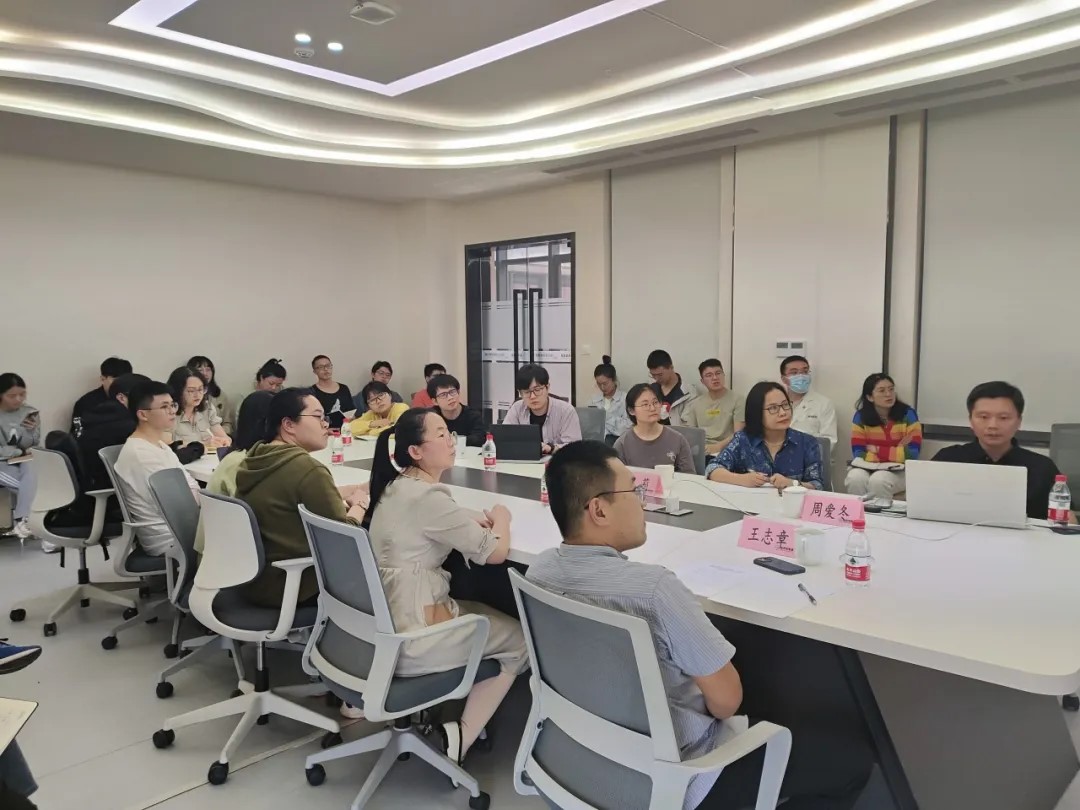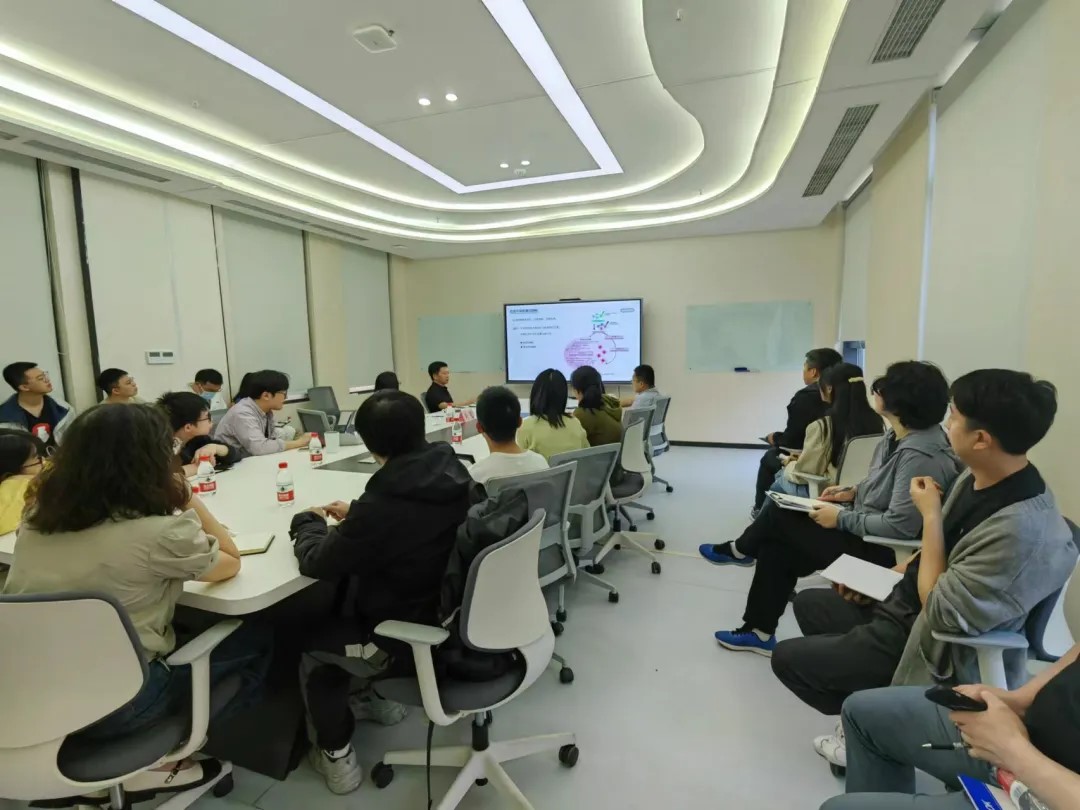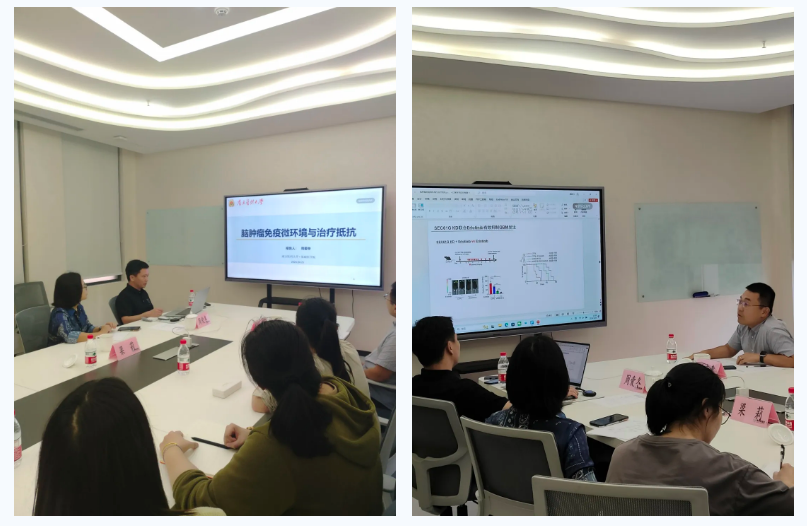
Lecture review | professor zhou aidong: brain tumor immune microenvironment and treatment resistance

lecture title
"brain tumor immune microenvironment and treatment resistance"
introduction to the keynote speakers
professor zhou aidong, professor and doctoral supervisor of the school of basic medicine of southern medical university, guangdong’s “pearl river talent” program and southern medical university’s top-level talent introduction. he has been engaged in scientific research in the neurosurgery department of md anderson cancer center for many years, mainly engaged in primary glioblastoma and research on the mechanism and translation of brain metastasis in lung cancer/breast cancer. he has published multiple research papers as the corresponding author or first author in journals such as nat cell biol, pnas, adv sci, cell reports medicine, etc., and has been cited more than 3,000 times (including science, cell, nat med and other journals). he serves as a member of the neuro-oncology branch of the chinese neurological society, a standing committee member of the neuro-oncology branch of the guangdong society of precision medicine, and a standing committee member of the metastasis branch of the society of precision medicine. he has presided over a number of research projects at the national natural and provincial and ministerial levels.


professor zhou aidong was invited to jinfeng laboratory to give academic lectures
key points of the lecture
glioma is the most common type of tumor in the central nervous system. among them, glioblastoma (gbm) with pathological grade iv is called glioblastoma (gbm), accounting for 50-60% of patients with brain glioma. it is the most aggressive type. sexual central nervous system tumors. gbm is highly resistant to conventional radiotherapy and chemotherapy, has poor response to immunotherapy such as anti-pd1/pd-l1, and exhibits a high degree of immunosuppression. its immune characteristics mainly include massive infiltration of inflammatory suppressive microglia/macrophages (m2 type tam), as well as significantly reduced infiltration and cytotoxicity of cd8+ t cells, so it is called a "cold tumor".
professor zhou's team found that fbxo7 plays a key regulatory role in gbm tumorigenesis, mes transformation and drug resistance. they pointed out that fbxo7 stabilizes rbfox2 through k63-linked ubiquitination and controls rbfox2-mediated mesenchymal genes such as foxm1, alternative splicing of mta1 and postn, thereby promoting gbm mes transformation and chemotherapy resistance. targeting the fbxo7-rbfox2 axis is expected to be a potential strategy for treating gbm (li s, et al, advanced science, oct 2023).

amplification/mutation of egfr is a key factor driving the development of gbm. the team also revealed the important mechanism of egfr amplification on tumor immune evasion and tumor progression. they found that egfr-induced lncepat inhibits the senescence of gbm cells by regulating usp16-mediated h2k119ub (li l, et. al. sci adv, oct 5, 2022). amplification of genes adjacent to egfr is associated with poor prognosis in gbm. the team determined the important role of the sec61g gene in regulating the tumor-killing activity of cd8+ t cells through sirna screening of genes adjacent to egfr locus 7p11. studies have shown that more than 70% of egfr-amplified gbm have sec61g gene amplification, similar to the significantly up-regulated expression level of egfr in gbm. further studies have shown that sec61g, as an important subunit of the translocation protein complex sec61, can regulate the endoplasmic reticulum translocation, n-glycosylation and ubiquitination of immune checkpoint ligands such as pd-l1 and pvr, thus promote their protein stability and cell membrane localization. knocking down or inhibiting sec61g can promote t cell infiltration and anti-tumor immune activity, thereby inhibiting the growth of gbm. targeting sec61 combined with the egfr-tki erlotinib can effectively inhibit the proliferation of gbm cells and activate anti-tumor immunity, thereby effectively inhibiting the development of gbm and prolonging the survival period of gbm-bearing mice. therefore, jointly targeting sec61g and egfr may become a potential clinical strategy for treating egfr-amplified tumors (zeng k, et al. pnas, 2023).
in addition to primary gliomas, professor zhou's team also studied the related mechanisms of brain metastases. the incidence of brain metastases is more than 10 times that of primary gliomas, and more than 40% of lung cancer and 30% of breast cancer patients will eventually develop brain metastases, with a high fatality rate. the research team's work focuses on the remodeling of ecm proteins and the immune microenvironment, revealing the interactions between lung cancer/breast cancer brain metastasis cells, stromal cells, and immune cells. they found that the ecm protein hsp47 in lung/breast cancer promotes microglial m2 polarization by mediating collage deposition and inhibits the anti-tumor immune activity of cd8+ t cells, thereby promoting the generation of brain metastases. col003 targeted therapy targeting hsp47 can activate the anti-tumor immune activity of t cells, promote the effect of brain metastases on pd-l1 monoclonal antibody immunotherapy, significantly improve the survival of mice, and provide a basis for combined targeted therapy of clinical brain metastases. provides new basis (li wang, et. al. cell reports medicine, 2024. in press.).
- About Us
-
Research Platform
- Major Disease Sample Database
- Innovative Drug Verification And Transformation Platform
- Experimental Animal Center
- Life And Health Future Laboratory
- Biomedical Imaging Platform
- Cell Multi-Omics Platform
- Pathology Technology Platform
- Bioinformatics Research And Application Center
- Jinfeng Pathology Precision Diagnosis Center
- Research Team
- Information Center
- Join Us


 渝公网安备50009802002274
渝公网安备50009802002274